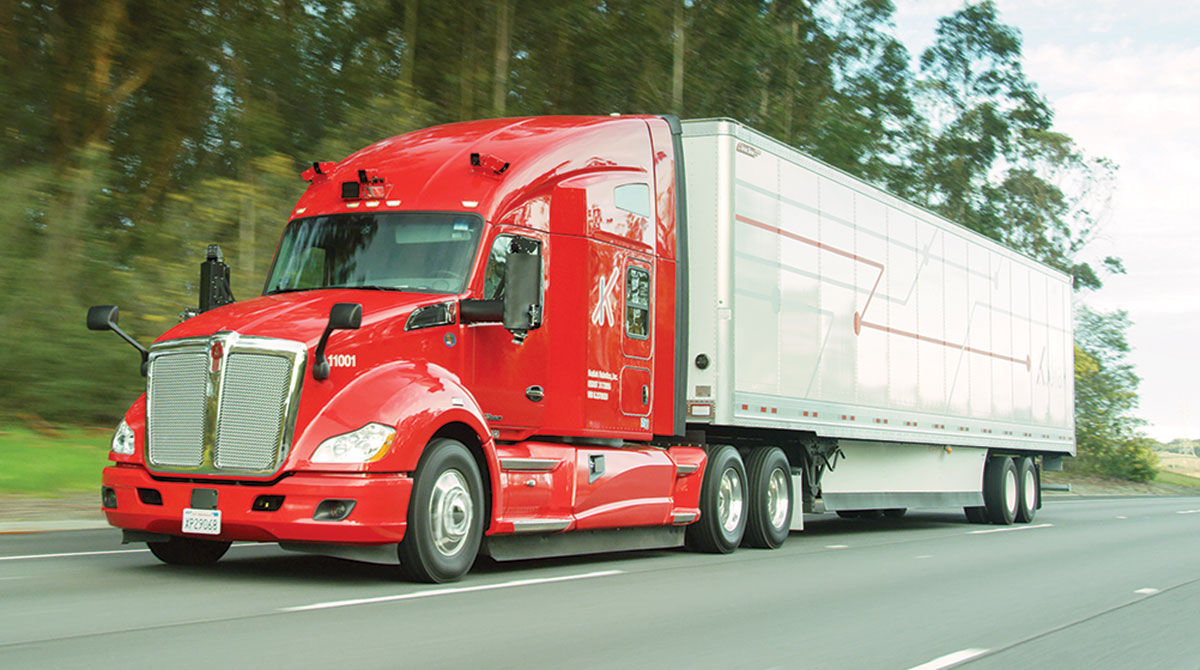By: Samuel Lin
The endless highway went off into the distance, for ad infinitum, into the horizon. Cars whizzed by miles and miles of trees and fields while lumbering trucks carrying cargo rumbled past. On a red semi-truck head the logo k was advertised with Kodiak Robotics Inc. in small letters underneath. Sitting in the driver’s seat of this gargantuan truck was . . . . no one.
Could this become a reality?
Kodiak, an automated truck company, is partnering with other trucking companies such as U.S Xpress and Werner enterprises to test its new self-driving truck with a safety driver behind the wheel. Though not fully driverless, this technology could pave the way for a fully driverless truck.
Kodiak Robotics is a company based in Mountain View, California that creates automated trucks. Last April, Kodiak began testing in partnership with U.S. Xpress. The self-driving truck made eight total deliveries between Dallas and Atlanta, for a total of 6,350 miles. A safety driver sat behind the wheel to take over just in case the truck malfunctioned, which it did a couple of times. The automated truck was able to run almost 24/7 for 5 and a half days, unlike trucks that require an active driver.
According to the Federal Motor Carrier Safety Administration (FMCSA), truck drivers are only allowed to drive a maximum of 14 hours per day, which is to protect the driver from getting fatigued or distracted.
“Our partnership with the U.S. Xpress marks our service expansion to the East Coast,” Don Burnette, the CEO of Kodiak Robotics, said. He noted that trucks now have “the capacity to sustain 24/7 operations across the more than 750 miles between Dallas and Atlanta — two of our nation’s busiest freight hubs — represents a giant step forward for Kodiak, and for the AV [Automated Vehicle] Trucking industry as a whole.”
Kodiak Robotics also partnered with Werner Enterprises, the fifth largest truckload carrier in the U.S. It tested the automated truck making 4 round trips, or 8 total trips between Dallas and Lake City, Florida. Similar to the partnership with U.S Xpress, there was a safety driver present. The truck was able to run full day for more than 6 days and a whopping 7,540 miles.
In the future, when the automated truck is completely flawless, companies such as TuSimple and PlusAI plan to use the transfer hub model. In this system, a human driver will do the first and final leg of the delivery in the town or city, while an automated truck will drive the highway section of the delivery.
This model could make deliveries faster, save truck companies money by reducing salary expenditures, and prevent accidents.
The potential advance also brings detrimental effects, though. Automated trucks could leave 500,000 people jobless, including truck drivers and truck maintenance staff at truck stops, studies show. In addition, some truck drivers think they won’t get paid as much, and others are reluctant to give up highway driving.
“I hate city driving,” Cannon Bryan, a truck driver said, “I enjoy picking up a load in Dallas and driving to Grand Rapids, Mich.”
Sources:
https://www.nytimes.com/2022/09/28/business/driverless-trucks-highways.html











